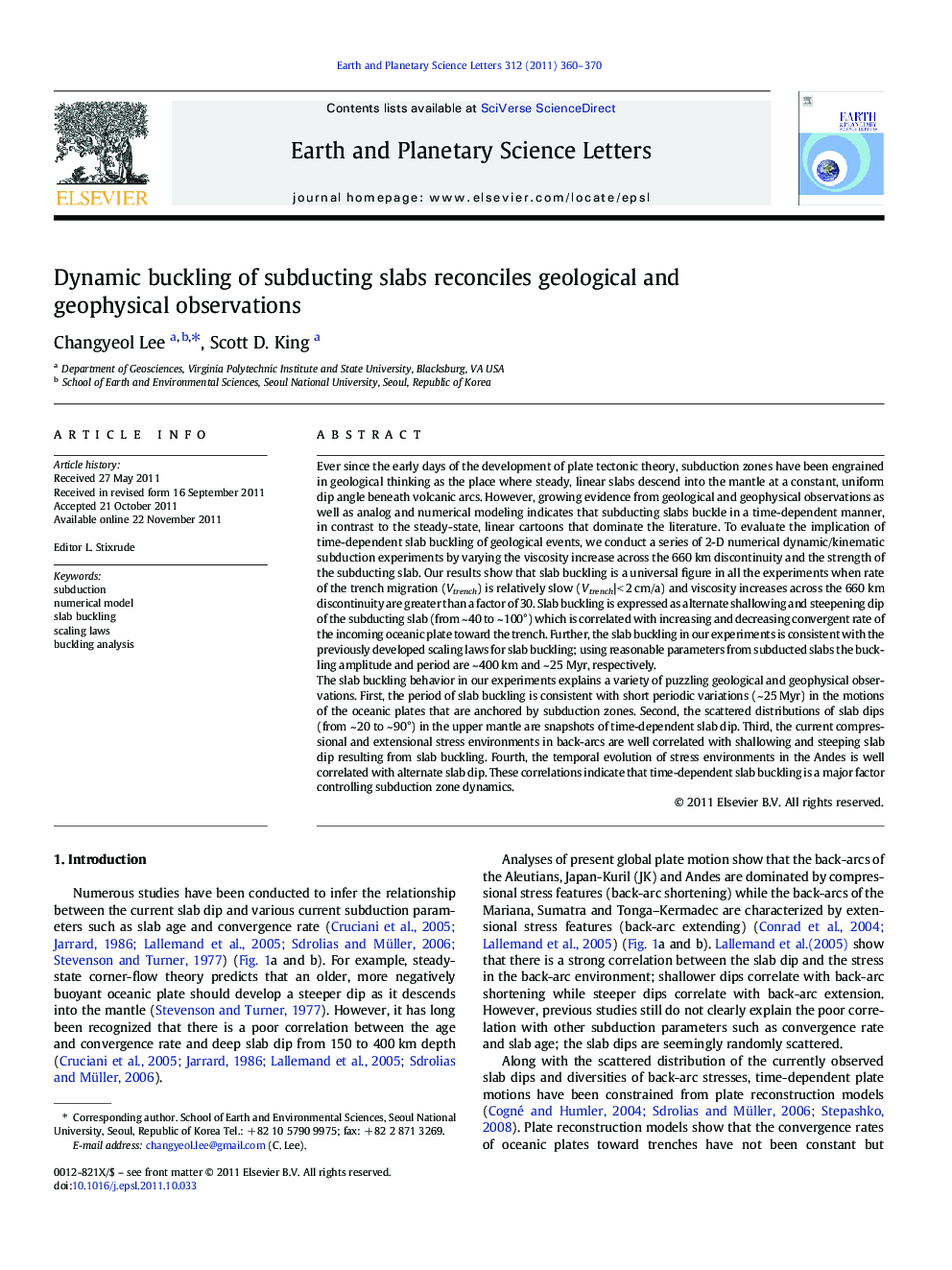| کد مقاله | کد نشریه | سال انتشار | مقاله انگلیسی | نسخه تمام متن |
|---|---|---|---|---|
| 4677707 | 1634815 | 2011 | 11 صفحه PDF | دانلود رایگان |

Ever since the early days of the development of plate tectonic theory, subduction zones have been engrained in geological thinking as the place where steady, linear slabs descend into the mantle at a constant, uniform dip angle beneath volcanic arcs. However, growing evidence from geological and geophysical observations as well as analog and numerical modeling indicates that subducting slabs buckle in a time-dependent manner, in contrast to the steady-state, linear cartoons that dominate the literature. To evaluate the implication of time-dependent slab buckling of geological events, we conduct a series of 2-D numerical dynamic/kinematic subduction experiments by varying the viscosity increase across the 660 km discontinuity and the strength of the subducting slab. Our results show that slab buckling is a universal figure in all the experiments when rate of the trench migration (Vtrench) is relatively slow ( Vtrench| < 2 cm/a) and viscosity increases across the 660 km discontinuity are greater than a factor of 30. Slab buckling is expressed as alternate shallowing and steepening dip of the subducting slab (from ~ 40 to ~ 100°) which is correlated with increasing and decreasing convergent rate of the incoming oceanic plate toward the trench. Further, the slab buckling in our experiments is consistent with the previously developed scaling laws for slab buckling; using reasonable parameters from subducted slabs the buckling amplitude and period are ~ 400 km and ~ 25 Myr, respectively.The slab buckling behavior in our experiments explains a variety of puzzling geological and geophysical observations. First, the period of slab buckling is consistent with short periodic variations (~ 25 Myr) in the motions of the oceanic plates that are anchored by subduction zones. Second, the scattered distributions of slab dips (from ~ 20 to ~ 90°) in the upper mantle are snapshots of time-dependent slab dip. Third, the current compressional and extensional stress environments in back-arcs are well correlated with shallowing and steeping slab dip resulting from slab buckling. Fourth, the temporal evolution of stress environments in the Andes is well correlated with alternate slab dip. These correlations indicate that time-dependent slab buckling is a major factor controlling subduction zone dynamics.
► 2-D dynamic subduction is modeled to infer the implications of slab buckling.
► The scaling laws for slab buckling predict slab buckling in our models.
► Slab buckling explains geophysical/geological observations in subduction zones.
► Slab buckling is a natural expression of temporal evolution of subduction.
Journal: Earth and Planetary Science Letters - Volume 312, Issues 3–4, 15 December 2011, Pages 360–370